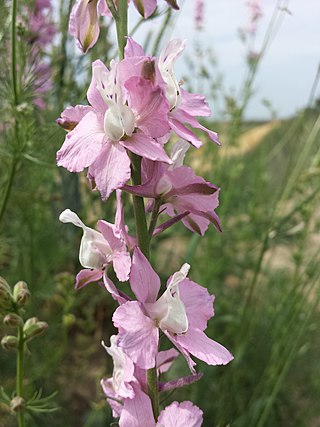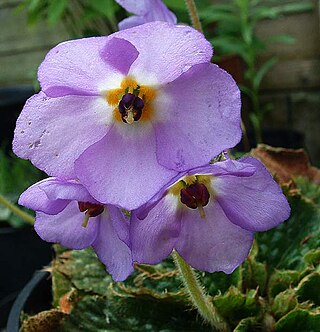
Crocus is a genus of seasonal flowering plants in the family Iridaceae comprising about 100 species of perennials growing from corms. They are low growing plants, whose flower stems remain underground, that bear relatively large white, yellow, orange or purple flowers and then become dormant after flowering. Many are cultivated for their flowers, appearing in autumn, winter, or spring. The flowers close at night and in overcast weather conditions. The crocus has been known throughout recorded history, mainly as the source of saffron. Saffron is obtained from the dried stigma of Crocus sativus, an autumn-blooming species. It is valued as a spice and dyestuff, and is one of the most expensive spices in the world. Iran is the center of saffron production. Crocuses are native to woodland, scrub, and meadows from sea level to alpine tundra from the Mediterranean, through North Africa, central and southern Europe, the islands of the Aegean, the Middle East and across Central Asia to Xinjiang in western China. Crocuses may be propagated from seed or from daughter cormels formed on the corm, that eventually produce mature plants. They arrived in Europe from Turkey in the 16th century and became valued as an ornamental flowering plant.

Lunaria is a genus of flowering plants in the family Brassicaceae. It is native to Europe and has been introduced to North America and elsewhere. Species include:

Gesneriaceae, the gesneriad family, is a family of flowering plants consisting of about 152 genera and ca. 3,540 species in the tropics and subtropics of the Old World and the New World, with a very small number extending to temperate areas. Many species have colorful and showy flowers and are cultivated as ornamental plants.

Matthiola is a genus of flowering plant in the mustard family Brassicaceae. It is named after Italian naturalist Pietro Andrea Mattioli (1501–1577). The genus contains about 50 species of annual, biennial and perennial herbaceous plants and subshrubs. Many are cultivated for their heavily scented, colorful flowers.

Consolida is a genus of about 40 species of annual flowering plants in the family Ranunculaceae, native to western Europe, the Mediterranean and Asia. Phylogenetic studies show that Consolida is actually an annual clade nested within the genus Delphinium and it has been treated as a synonym of Delphinium in Kew's Plants of the World Online. The name of the genus comes from an archaic use of consolidation, meaning "healing", in reference to the plant's medieval use for healing wounds.

Fallopia is a genus of about 12 species of flowering plants in the buckwheat family, often included in a wider treatment of the related genus Polygonum in the past, and previously including Reynoutria. The genus is native to temperate and subtropical regions of the Northern Hemisphere, but species have been introduced elsewhere. The genus includes species forming vines and shrubs.

Rebutia is a genus of flowering plants in the family Cactaceae, native to Bolivia and Argentina. They are generally small, colorful cacti, globular in form, which freely produce flowers that are relatively large in relation to the body. They have no distinctive ribs, but do have regularly arranged small tubercles. They are considered fairly easy to grow and they may produce large quantities of seeds that germinate freely around the parent plant.

Abelmoschus is a genus of about fifteen species of flowering plants in the mallow family (Malvaceae), native to tropical Africa, Asia and northern Australia. It was formerly included within Hibiscus, but is now classified as a distinct genus. The genus name derives from Arabic meaning 'father of musk' or 'source of musk' referring to the scented seeds.

Calycanthus, called sweetshrub, is a genus of flowering plants in the family Calycanthaceae. The genus includes two to four species depending on taxonomic interpretation; three are accepted by most 21st century sources.

Rhizanthella, commonly known as underground orchids, is a genus of flowering plants in the orchid family, Orchidaceae and is endemic to Australia. All are leafless, living underground in symbiosis with mycorrhizal fungi. The inflorescence is a head of flowers held at, or just above the ground but mostly covered by soil or leaf litter and little is known about the mechanism of pollination.

Acanthus is a genus of about 30 species of flowering plants in the family Acanthaceae, native to tropical and warm temperate regions, with the highest species diversity in the Mediterranean Basin and Asia. This flowering plant is nectar producing and depends on butterflies, such as Anartia fatima, and other nectar feeding organisms to distribute its pollen. Common names include Acanthus and bear's breeches. The generic name derives from the Greek term ἄκανθος (akanthos) for Acanthus mollis, a plant that was commonly imitated in Corinthian capitals.

Haloragaceae is a eudicot flowering plant family in the order Saxifragales, based on the phylogenetic APG system. In the Cronquist system, it was included in the order Haloragales.

Ramonda myconi, the Pyrenean-violet or rosette mullein, syn. R. pyrenaica, is a species of flowering plant in the family Gesneriaceae, which is a relictual endemite of shady, rocky places in the Pyrenees and north eastern Spain. It is a rosette-forming evergreen perennial growing to 10 cm (4 in) high by 20 cm (8 in) broad, with oval, crinkled leaves. Five-petalled purple flowers with prominent yellow anthers appear on leafless stems in spring.

Theodor Heinrich Hermann von Heldreich was a German botanist born in Dresden. In 1851, he settled in Greece for the rest of his life. He carried out botanical experiments in the country. He published thirteen volumes of the "Herbarium Graecum Normale" between 1856 and 1896. In Greece, he served as director of the National Garden of Athens for over 50 years. He was also director of the natural history museum of Athens. Heldreich was good friends with Charles Darwin.

Anemone hepatica, the common hepatica, liverwort, liverleaf, kidneywort, or pennywort, is a species of flowering plant in the buttercup family Ranunculaceae, native to woodland in temperate regions of the Northern Hemisphere. This herbaceous perennial grows from a rhizome.

Ramonda serbica, also known as Serbian ramonda and Serbian phoenix flower, is a species in the family Gesneriaceae and are one of the four plants in the Ramonda genus. It was first discovered in 1874 near Niš, Serbia, by the Serbian botanist Josif Pančić. The Serbian ramonda is notable for its distinctive desiccation tolerance.

Ramonda nathaliae or Natalie's ramonda is a species of flowering plant in the genus Ramonda. The plant was discovered in 1884 near the city of Niš by botanists Sava Petrović and Josif Pančić, who named it after Queen Natalie of Serbia (1882–1889).

Glandora oleifolia(Lapeyr.) D.C.Thomas, the olive-leaved gromwell, is a species of flowering plant in the family Boraginaceae. The plant is native to a small rocky area near Figueras in the eastern Pyrenees, and is endemic to Spain.

Ramonda heldreichii is a species of flowering plant in the family Gesneriaceae. It was formerly treated as Jankaea heldreichii, the only member of the monotypic genus Jankaea. It is endemic to Mount Olympus in Greece where it is a relict species from the Tertiary period.

Androsace vitaliana is a species of plant in the primrose family, Primulaceae. It was previously known by the synonym Vitaliana primuliflora. Native to the high mountains of Europe, it is cultivated as an alpine garden plant, being considered easy to grow in well drained soil in a sunny position.




















